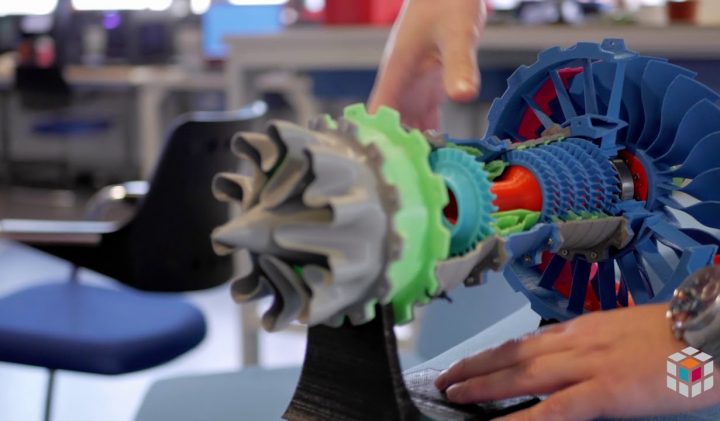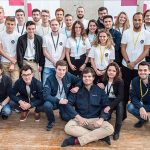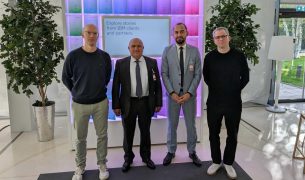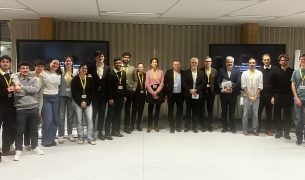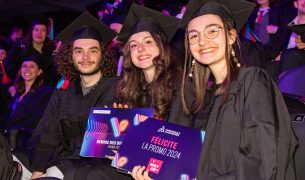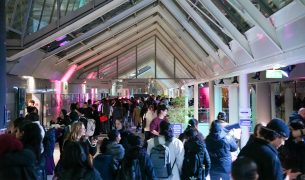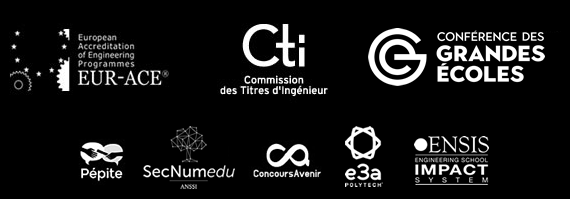Student association De Vinci FabLab produced a video presentation of the Fab Lab. Welcome to the place where “making (almost) anything” is possible.
In this video, created by Alexis Massol, the engineering student association opens the doors of Pôle Léonard de Vinci’s FabLab. The association is responsible for the material and is in charge of introducing students to 3D impression and digital conception.
What exactly is a fab lab ? It’s a fabrication laboratory or small-scale workshop which aims to provide makers with the highest possible number of machines, among which computer-driven machine-tools and software. One goal, making “almost anything”.
Some of the projects created in the Pôle Léonard de Vinci Fab Lab so far include a prototype of connected dress, a robotized arm, a plane turbine made exclusively of 3D printed elements and a drone.
Demo and Live is De Vinci FabLab’s motto!
De Vinci FabLab’s video features all the equipment available on site. A laser cutter, four Velleman printers, six Makerbot including two of the 5th generation model, one 2X and three Makerbot 2 as well as a Scholar Object 30 printer. The latter has a high finish level enabling students to create mobile parts.
All year long, the association offers trainings, workshops and get togethers with partners. The video also shows prototypes created in the Fab Lab.
Pôle Léonard de Vinci’s Fab Lab, a place for everyone to create
At the end of the video, « Push the limits of your creativity » invites students to come create and invent within the Fab Lab. This is exactly De Vinci’s FabLab’s goal. The Fab Lab is opened to students from the three schools, ESILV, EMLV (management) and IIM (digital).
Once a month, ESILV engineering students welcome high school students who want to take part in a 3D printing and IoT workshop at the Fab Lab, an occasion to manipulate Little Bits and maybe to arouse callings for future engineers.
The birth and philosophy of fab labs
The fab lab programme was created in 2001 at the MIT Media Lab, in collaboration with the Grassroots Invention Group, thanks to a grant from the National Science Foundation. The objective was to give individuals the opportunity to create smart devices themselves, without using mass production. The fab lab movement shares common values with the open source movement. The concept strengthened following a class taught at the MIT, named “How To Make (Almost) Anything”, which is still a success in the curriculum to this day.
One year after the first creation of a fab lab at the MIT, another one opened in an Indian Ashram named Vigyan. Bakhtiar Mikhak, founder and director of the Grassroots Invention Group sees fab labs as an alternate model of Information and Communications Technologies for development. (“Fab Lab: an Alternate Model of ICT for Development” – July 2013).
“[I believe] that the most sustainable way to bring the deepest results of the digital revolution to developing communities is to enable them to participate in creating their own technological tools for finding solutions to their own problems. Each fab lab consists of a collection of tools for design and modeling, prototyping and fabrication, instrumentation and testing and debugging, and documentation for a wide range of applications in formal and informal education, health and environmental monitoring, as well as economic and social development”.
Are you interested in visiting Pôle Léonard de Vinci’s Fab Lab ? Come meet us at our next open days.









